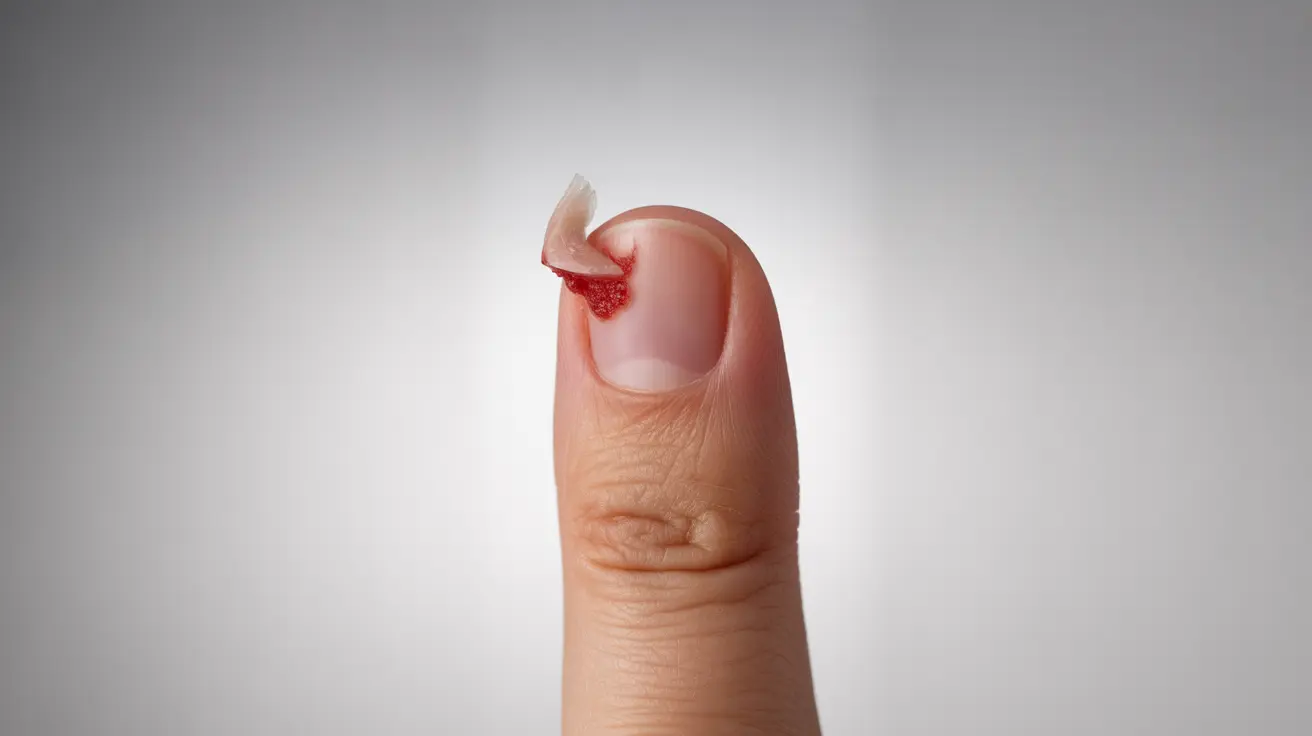Hangnails are those pesky, painful strips of skin that appear along the edges of your fingernails or toenails. While they might seem like a minor annoyance, understanding what hangnails look like and how to properly identify them is crucial for effective treatment and prevention. This comprehensive guide will help you recognize, treat, and prevent hangnails before they become a more serious problem.
Understanding Hangnail Appearance and Characteristics
A hangnail typically appears as a small, torn piece of skin that partially detaches from the nail bed or surrounding cuticle area. These ragged strips of skin can vary in size but are usually a few millimeters long. While they may look insignificant, hangnails can be surprisingly painful and, if left untreated, may lead to infection.
Common Visual Signs of Hangnails
When examining your fingers or toes for hangnails, look for these distinctive characteristics:
- Small, rough pieces of skin near the nail edge
- Partially detached skin fragments along the cuticle
- Torn or jagged skin pieces that catch on fabric
- Redness around the affected area
- Visible skin separation from the nail bed
Common Causes of Hangnails
Understanding what causes hangnails is essential for prevention. Several factors can contribute to their development:
Environmental Factors
The environment plays a significant role in hangnail formation:
- Dry, cold weather conditions
- Frequent hand washing or water exposure
- Low humidity environments
- Exposure to harsh chemicals or cleaning products
Personal Habits
Certain behaviors can increase your risk of developing hangnails:
- Nail biting or picking at cuticles
- Poor nail care routine
- Frequent use of nail polish removers
- Not moisturizing regularly
Treatment and Care Options
When dealing with hangnails, proper treatment is crucial to prevent complications and promote healing:
Immediate Care Steps
- Clean the affected area thoroughly
- Trim the hangnail carefully with sanitized clippers
- Apply an antiseptic solution
- Keep the area moisturized
- Cover with a bandage if necessary
Professional Treatment
While most hangnails can be treated at home, some situations require professional attention, especially if signs of infection appear or the condition persists despite home treatment.
Prevention Strategies
Taking preventive measures can significantly reduce the occurrence of hangnails:
- Regular moisturizing of hands and nails
- Wearing gloves when doing dishes or cleaning
- Maintaining proper nail care hygiene
- Using cuticle oil daily
- Avoiding nail biting and picking
Frequently Asked Questions
What does a hangnail look like and how can I recognize it?
A hangnail appears as a small, torn piece of skin that partially detaches from the area around your nail. It's usually a few millimeters long and can be painful to touch. The surrounding skin may appear red or irritated.
What causes hangnails and why do they develop around fingernails or toenails?
Hangnails primarily develop due to dry skin, environmental factors, and poor nail care habits. They commonly occur when the skin around nails becomes dehydrated and begins to crack or tear, especially in dry or cold weather conditions.
How can I safely treat a hangnail at home to avoid pain and infection?
To safely treat a hangnail, start by soaking the affected area in warm water. Then, using sterilized nail clippers, carefully trim the loose skin. Apply an antibiotic ointment and keep the area moisturized. Avoid pulling or tearing at the hangnail.
What are the signs that a hangnail has become infected and when should I see a doctor?
Signs of an infected hangnail include increased pain, swelling, redness, warmth around the affected area, and possible pus formation. If you notice these symptoms or if the condition worsens after a few days of home treatment, consult a healthcare provider.
What are the best ways to prevent hangnails from forming in dry or damaged skin?
The best prevention methods include keeping your hands and nails well-moisturized, using cuticle oil regularly, wearing protective gloves when washing dishes or cleaning, and maintaining proper nail care hygiene. Avoid biting or picking at your nails and cuticles.




